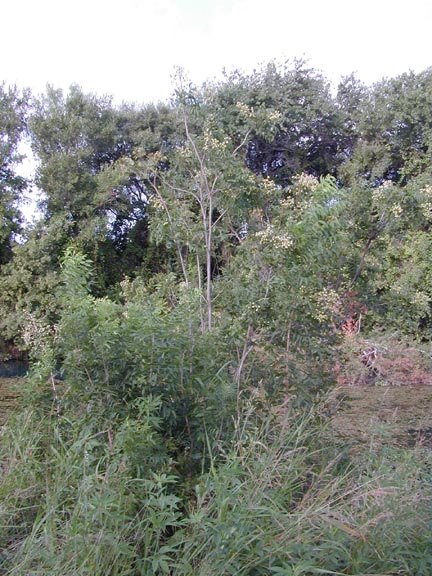| Western Soapberry is present in moist soils along streams in the South Texas Plains and Edwards Plateau. This tree can reach up to 50 feet in height with a trunk between 1-2 feet in diameter. The leaves are 5 to 18 inches long with 4 to 11 pairs of leaflets. The white flowers bloom between May and June with large showy stalks 5 to 10 inches long and 5 to 6 inches wide. Ripening from September to October, the fruit is round and shriveled and can be white, yellowish, or blackish in color. The fruit is not edible due to containing a poisonous substance called saponin. It has been used as a medicine to treat renal disorders and fevers and is commonly used in Mexico as a laundry detergent due to it's lathering ability. |
